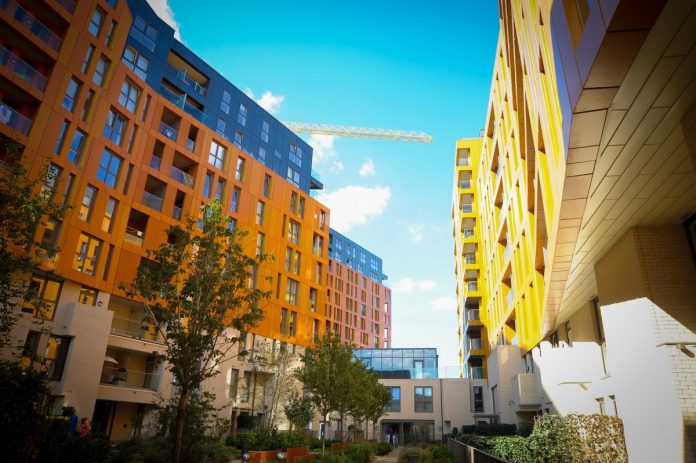Steel Framing Systems (SFS) make up a substantial part of the offsite solutions portfolio – from structural panels to complete frames, plus a variety of roofing, volumetric modular options and infill walling applications. Steve Thompson, Managing Director of EOS Facades, shares his perspective on the budget and how the industry can meet the specified target of 300,000 homes per year by 2025
The housing initiatives outlined in Philip Hammond’s Autumn Budget appear to have gained virtually unanimous approval. Political intention is clear – however, the construction industry cannot possibly deliver the annual target for new homes by using traditional building methods.
In his opening address the Chancellor said that the world is ‘on the brink of a technological revolution’ and he plans to invest to keep Britain at the forefront. But this ‘revolution’ equally applies to offsite manufacturing facilities.
Our own state-of-the-art manufacturing facility has changed beyond recognition, with further expansion planned for next year. EOS has extended our section capability with a significant investment in new advanced roll-forming machinery that has been specifically commissioned.
The digital age is evolving. We are constantly adapting technology in order to enhance all aspects of the modern world. We have changed the way we socialise, the way we travel and the way we work in order to integrate the latest technology into our everyday lives.
Building Information Modelling (BIM) is at the forefront of the latest digital technology in today’s built environment. There is now almost a universal recognition of BIM within the construction industry, as well as widespread private sector investment in the implementation of BIM.
BIM technology controls the detail of the manufacturing process to enable the design brief to be tested and the proposed construction solution to be changed at minimum cost. In terms of procurement, BIM is a powerful tool that allows construction companies to quantify the requirements of their projects. This enables control of spending and time management resulting in the reduction of wastage in these areas. It is extremely difficult to transport the appropriate knowledge across all construction partners at the same time without the use of BIM.
 These advancements also involve CAD/CAM systems that control this new manufacturing machinery to produce the light gauge steel sections required for optimised frame or cassette design. By manufacturing offsite for onsite installation – we are able to create much of the finished product in the factory – ultimately minimising onsite labour.
These advancements also involve CAD/CAM systems that control this new manufacturing machinery to produce the light gauge steel sections required for optimised frame or cassette design. By manufacturing offsite for onsite installation – we are able to create much of the finished product in the factory – ultimately minimising onsite labour.
Across the year to date, the housing projects EOS has been involved in have delivered circa 8,000 homes. These projects include 5,000 apartments at the Royal Arsenal development at Woolwich, 189 new homes at Artisan Place; Barratt London’s redevelopment of Blackfriars Road, providing 336 new homes made up of studios, one, two and three-bedroom apartments and penthouses; the development 352 homes at Cambridge University for students and key workers; together with 700 homes at Enderby Wharf, which has been described as a ‘frontier development’, making up a significant part of the regeneration of Greenwich.
Considering that residential is just one of the sectors that we operate in, these numbers illustrate the potential of Steel Framing Systems (SFS) to help resolve the housing crisis. But what the industry needs now is strategic planning to usher in this ‘revolution’ to improve productivity and explore new opportunities, technologies and processes.
There are housing sectors where speed really matters such as the private rental sector (PRS) and student accommodation – adopting offsite manufacture can be a key business driver for these developments. For blue chip housebuilders like Barratt Developments, one key driver to adopting offsite methods has been trying to future proof for skills shortages and setting the housebuilding bar high.
The challenging element of the market presently surrounds logistics, process engineering, scheduling skills, digital engineering and capacity planning.
The manufacturing environment is far different to the construction environment – the lack of traditional skills in certain parts of the construction sector is a problem easier solved in the offsite sector – that is within the factory controlled environments rather than on construction sites
I particularly welcome the Government’s commitment to training, with £34m extra allocated to develop construction skills across the country. But those operating in the offsite sector, with higher levels of productivity, can ensure that any investment in training, maximises outputs.
Training is also required further afield. We can co-ordinate and design system solutions with ease in the factory. But the efficient offsite process needs to keep running when the system is handled and installed. It has to be an end-to-end continuation. Rather than a process of offsite methodology to the factory gate before arriving onsite and being subjected to a traditional approach.
A way to combat this post-factory handling and installation, is via engagement between the project teams and a collaborative approach between all those involved at an earlier stage. Manufacturers have a lot of knowledge and we need to get involved at the start of the project not halfway through. Certainly ‘education’ is required at all levels of the process – not just the commonly understood long-term benefits but throughout the supply chain and construction cycle.
There has never been a better time to capitalise on the raft of benefits that factory-based solutions deliver. As an advanced high performance offsite solution, Steel Framing Systems are perfectly positioned to meet housing industry demands – they are future proof and future ready.

















